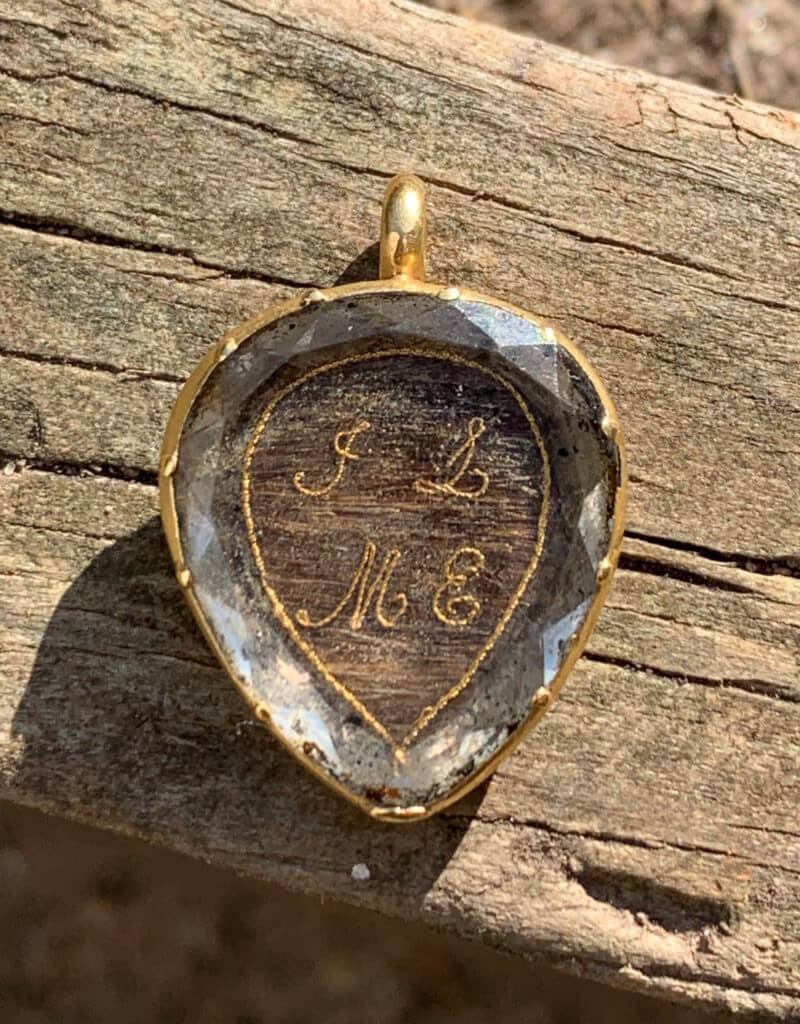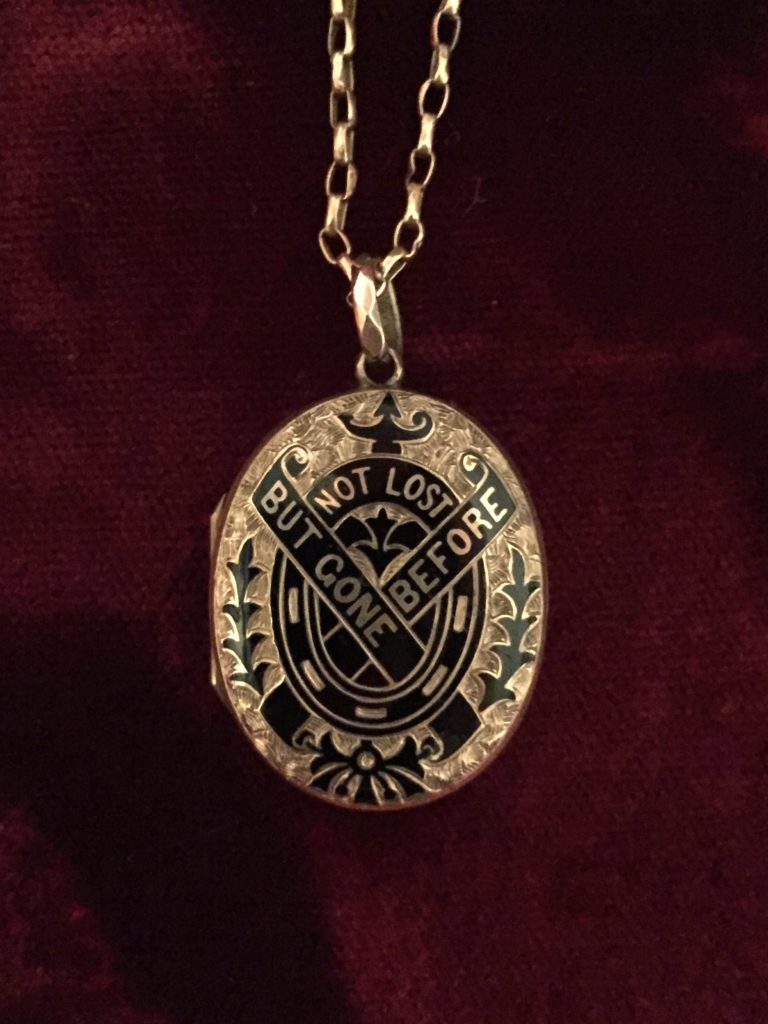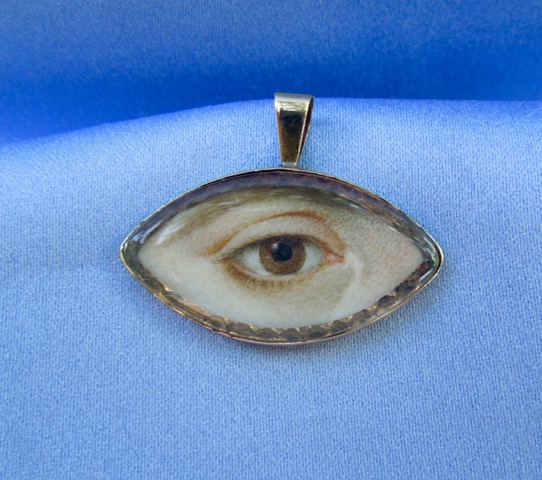Virtue Lives Beyond The Grave Sepia Pendant, 1776
The 1770s was a reaction to the Neoclassical movement post-1765. This was a time when the depiction and the allegories for the ‘self’ had overtaken the literal motifs of death that Memento Mori had displayed, presenting scenarios such as the one seen here in sepia. The use of sepia, with its brown and red hues to denote the body and the earth, often utilised hair ground into the paint, giving many of the scenes high-relief or texture.
In this pendant, we have several factors that make it a wonderfully unique piece. Beginning from its top, we have the sentiment, which was non-standardised, the willow that underlines it and then the figure of the woman and the urn. None of these are the typical style that would be more highly produced and tailored to the person who purchased it; this piece shows more individual care in its design. This does not mean it is of higher or lesser value, simply that the person who commissioned it may have only requested one and this is that very piece.
‘Virtue Lives Beyond The Grave’ is the sentiment. A sentiment that is important to note for its statement and its design. Note how the artist has balanced the text from the left to the right, which has caused the intersection of ‘Beyond’ at the ‘e’ and the ‘y’. There is no small amount of skill or pre-thought that requires a desired dedication to work in conjunction with the art. Indeed, the artist may well have influenced the sentiment itself to accommodate this.
The willow, with its arrow-shaped leaves and hard-bend at the top (below ‘Beyond’) is quite standard, as its design works together with the shape of the piece. More unusual is the way it seems to move from the background of the female subject to the foreground at the base of the trunk.
With the female herself, her facial features and simplistic and not defined, however her hair and dress are quite detailed. Note the detail to her platted hair, the elements around the cuff, collar and hem of her underskirt. This is a wonderful way that the artist has used simple lines in the dress to show how it falls, revealing the leg, which helps promote the reposed figure of the female as she leans against the urn.
The urn and the plinth, which not perfectly working together, show that individuality of the artist. With this imperfection, the depth of the plinth doesn’t work in perspective with the piece and the lines aren’t balanced. For some, this may show a naiveté in the art, but I see every stoke of the brush as a personal statement by the artist. It shows a style of art that was developing and hands that were discovering this style.
The urn has excessive detail to its lid and base, as well as the garland that surrounds it. By the 1780s, this would become more of a defined shape, but here, we see the template is not yet set.
With its oval shape, the piece is moving towards the navette shape that would dominate the mid 1780s to the end of the century, but further examples of the stippled-gold border design can be found here:
> JJ, A Sepia Neoclassical Brooch
> Two Lovers Captured in a Sepia Ring From 1792
> 1786 Sepia Ring “Sacred Will I Keep Thy Dear Remains”
Overall, a magnificent sepia piece that represents the love of a family to Thomas Seddon, who passed on in 1776 at age 49. There is no specific dedication of royalty, age or gender; the piece simply is a beautiful token of love and grief.








